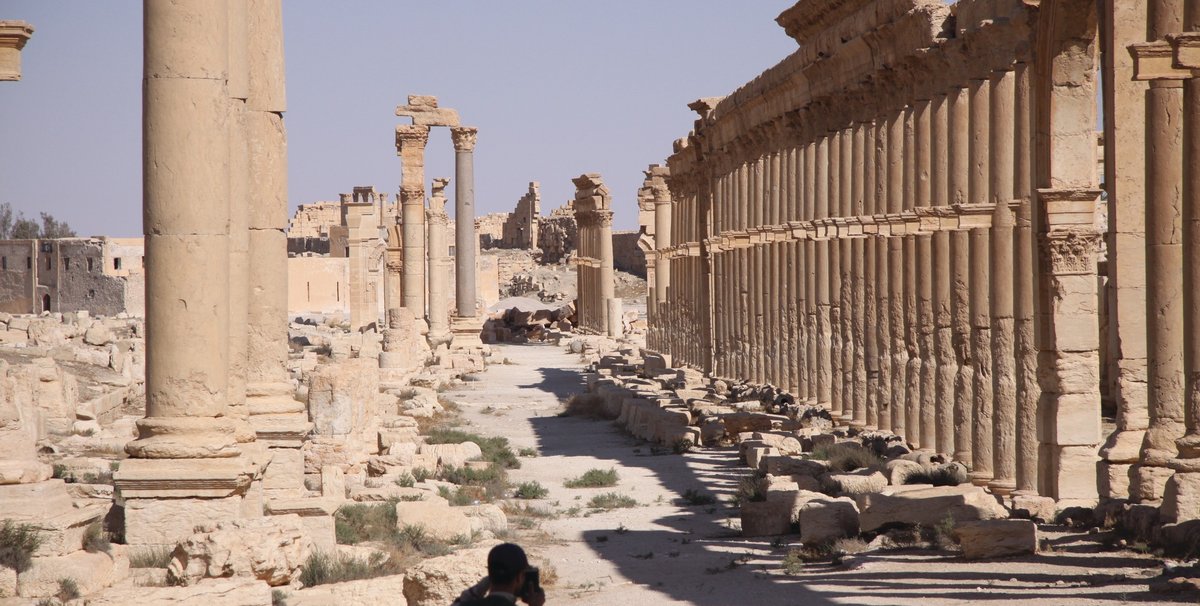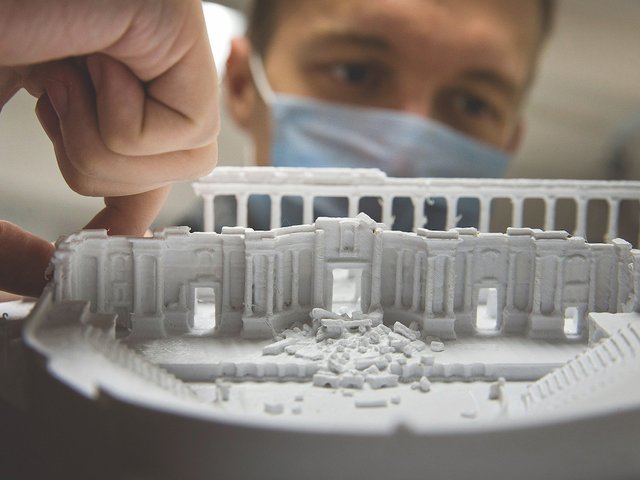The State Hermitage Museum in St Petersburg has joined forces with a Russian archaeological institute to build an interactive virtual model of Palmyra, a task that is becoming ever-more important as reports emerged today (20 January) that Islamic State (Isil) militants have destroyed the ancient city's amphitheatre and a tetrapylon. When archaeologists and antiquities experts from the two institutions visited Palmyra, in Syria, in late September, they did not know that drone footage and co-ordinates they collected would capture a snapshot of the Unesco World Heritage site just over two months before it fell to Isil for the second time in less than two years.
This detailed record of the ancient city can help experts “evaluate the extent of destruction that will take place in the coming days or has already occurred”, Natalia Solovyova, the deputy director of the Institute of the History of Material Culture of the Russian Academy of Sciences, told a Russian parliament publication last month. The Hermitage’s director, Mikhail Piotrovsky, says the “tragic nature” of the recent developments underscore the project’s importance.
The long-term plan is to use the digital rendering to help restore the city. To determine “what needs to be done”, researchers must “have an exact idea of what lies where”, Piotrovsky said in an interview before Palmyra’s recapture.
Researchers found, for example, that, while the Temple of Bel had been blown to smithereens, large fragments of the Temple of Baalshamin and the columns of Zenobia remain, allowing for the possibility of conservation. Early this year, the archaeological institute, which co-organised and funded the expedition, plans to present a virtual model of the reconstructed columns of Zenobia based on information gathered in Palmyra.
Russian archaeologists have been criticised for their work in Syria, which some view as an effort to put a palatable spin on Russia’s military involvement in the country. As we went to press, Russian state news agencies reported that Syrian troops were preparing to launch a counter-offensive in Palmyra with Russian support. But Piotrovsky has maintained that, while Russia has unique access to these sites—“our military allowed our drones to fly”, he says—reconstruction would be a joint effort. He says the team plans to deliver its findings to Syria’s Ministry of Culture and Unesco.
Military escort Accompanied by a Russian military escort and wearing bulletproof vests, the Russian team made their way through the largely abandoned city of Palmyra in early September. They used drones provided by GeoScan, a St Petersburg-based company, to take aerial photographs of the entire 13-sq.-km territory. In order to capture both an overall snapshot and fine details, the drones shot images at three different altitudes. Every object that is 3cm or larger is represented in the photographs, Solovyova says.
Armed with tens of millions of co-ordinates, as well as photographs taken on the ground, the team hopes to construct an interactive 3D rendering of the site. Solovyova estimates it will take around a year to process the information. The images also offer detailed clues about illegal digs, an issue that has become more pressing after looted relics from Palmyra were seized at a Geneva freeport last month.
Outside Russia, the mission has divided experts. “A complete 3D model of the ruins of Palmyra will certainly help in creating programmes for conservation, if prepared in high resolution and based on actual footage,” says Tomasz Waliszewski, the director of the Polish Centre of Mediterranean Archaeology at the University of Warsaw. (Polish archaeologists have worked in Palmyra for decades; last spring, they helped evacuate objects from Palmyra’s museum.) But Waliszewski also emphasised the need to consolidate international research on Palmyra, including an earlier effort to scan monuments by the Japanese archaeologist Kiyohide Saito.
Others maintain that archaeologists should not be interfering in an active war zone. “I’m not sure what the Russians… would like to do, or think they should be doing,” Amr Al Azm, an associate professor of Middle Eastern history and anthropology at Shawnee State University in Ohio, told us in November. Al Azm is a member of the Syrian opposition who, until 2004, led the conservation laboratories at Syria’s General Department of Antiquities and Museums.
For her part, Solovyova says her institute has no further plans to work in Palmyra and that restoration will not begin “until peace arrives”—whenever that may be. But she insists that the snapshot of the site will be essential to future reconstruction. “It will be possible… for specialists, politicians, diplomats, restorers and Unesco representatives to sit down with the Syrian government and discuss what can be done and how to do it using our model. That’s what it was created for.”
Piotrovsky says: “Archaeologists cannot fight, but during each respite [from military operations] they selflessly do their part, the work of preserving what we have—historical memory.”



